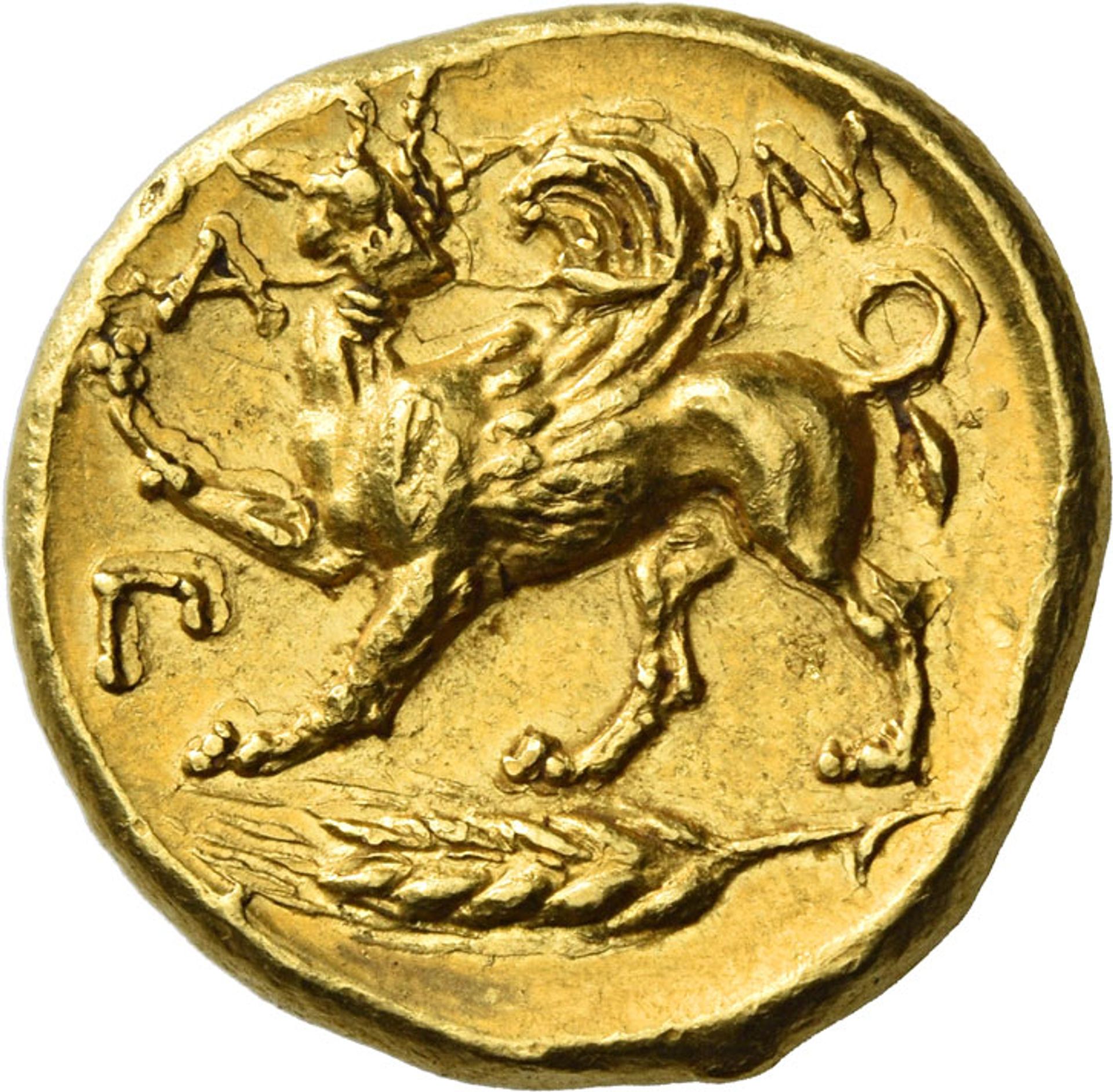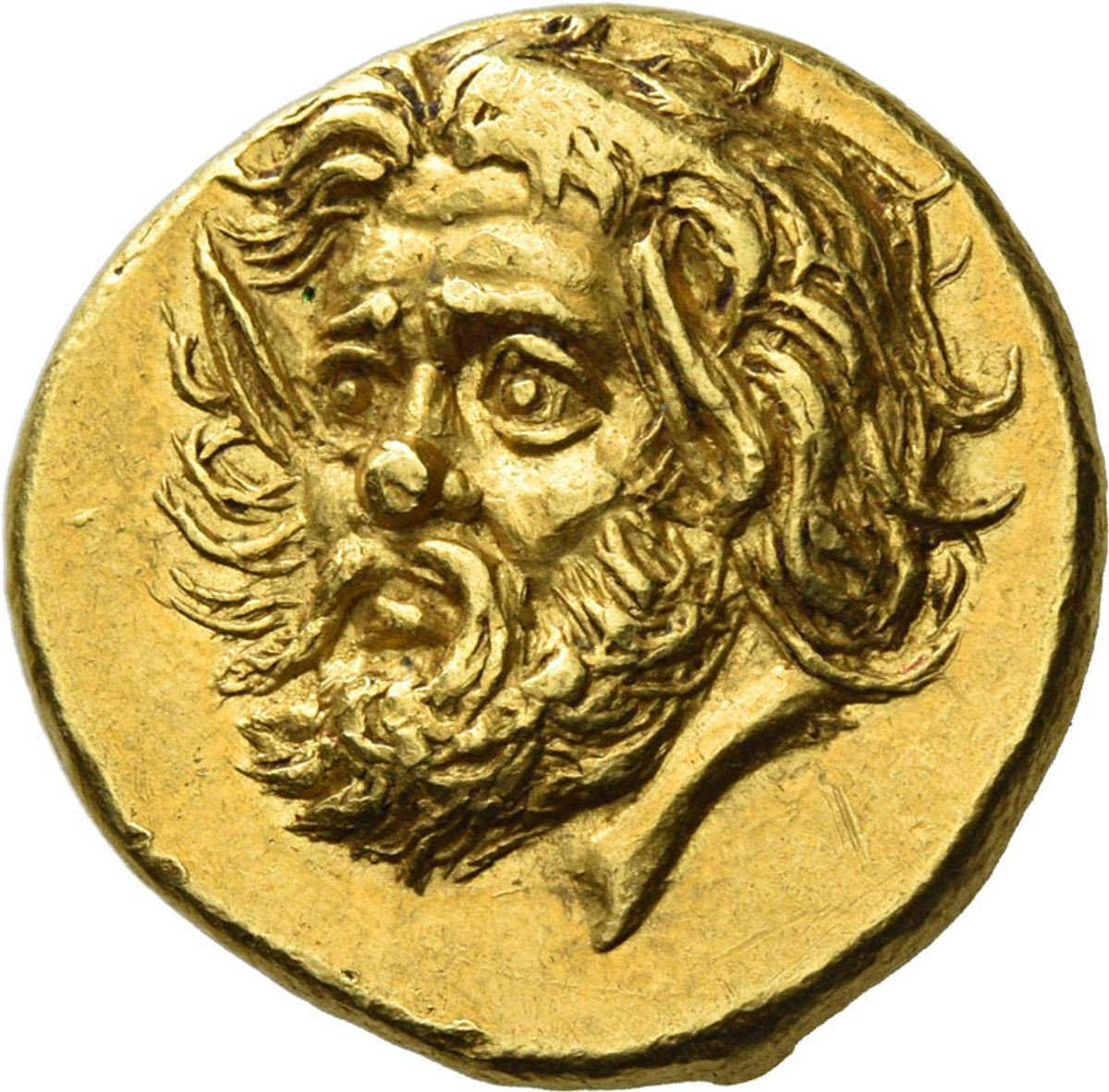A gold stater has sold for more than £4.8m setting a record for the most expensive ancient coin sold at auction. The coin from ancient Greece was sold at a Numismatica Ars Classica auction in Zurich last week for SFr5.39m with fees.
The stater depicts the head of the satyr on one side and a griffin holding a spear in its mouth on the other. In an unusual choice of design, the satyr’s head is shown in a three-quarter pose rather than the more common profile position usually seen on similar staters. Its value is attributed by the seller to this quirk of design as well as its rarity; it thought to be one of only three of its kind in existence and the only one not in a museum collection. Numismatica Ars Classica refused to disclose the buyer’s identity
The gold coin was made in the 4th century BC in the ancient Greek city of Panticapaeum, near to modern-day Kerch on the east coast of Crimea. Panticapaeum was part of the Bosporan Kingdom and the satyr on the coin may be a reference to the Spartocid king Satyros I, who ruled the Greco-Scythian state from 432BC to 389BC. The griffin, meanwhile, represents the mythical guardians of gold deposits found in the mountains of Scythia.
The stater was once in the collection of the State Hermitage Museum in St. Petersburg until the early 1930s when the museum sold off many of its treasures to raise money for the Soviet government. At that time, the Hermitage also sold paintings such as Raphael’s The Alba Madonna (around 1511) and Jan van Eyck’s The Annunciation (1434-36), which went on to form the core collection of the National Gallery of Art in Washington, DC.

The reverse of the coin shows a griffin holding a spear in its mouth Courtesy of Numismatica Ars Classica
Godfrey Locker Lampson, the early 20th century British politician and noted collector of ancient Greek coins who owned a coin struck from the same die, once wrote of its design: “The head of the satyr is a marvel of speaking portraiture. That so much expression could be packed into so small a round would not be believed by anyone who had not seen it.”
While the stater takes the record for priciest ancient coin, the most expensive coin ever sold at auction is a 1933 double eagle $20 gold specimen, which fetched $18.9m at Sotheby’s in 2021.
The stater’s sale last week helped Numismatica Ars Classica make a mint at its spring sales. “The whole auction realised exceptionally high prices totalling over SFr21m, well exceeding a presale estimate of SFr11m,” says Arturo Russo, the co-director of Numismatica Ars Classica. “This is a sign the whole market for numismatics is flourishing, and is especially strong for ancients at the moment.”


